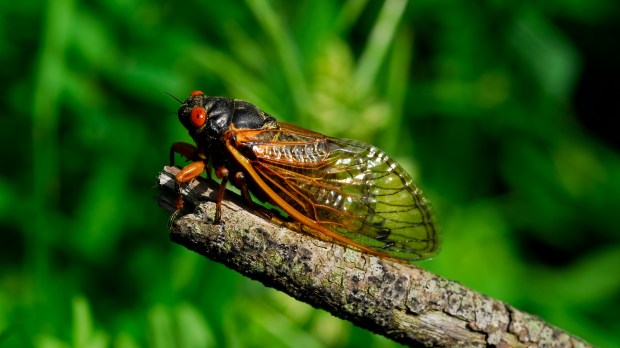In technology, 17 years is a long time, and a lot can change in that period. Just ask Gene Kritsky.
For Kritsky, the number 17 is significant. Like those of the 17-year-cycle cicadas he studies, his “antennae” start going up every 17 years.
This year, parts of the United States will see the emergence of Brood X cicadas, which have been living in the ground for 17 years. According to the website Cicada Mania, they began emerging in Tennessee on April 27.
Seventeen years ago, Kritsky, dean of behavioral and natural sciences and a biology professor at Mount St. Joseph University in Cincinnati, asked for the public’s support in tracking Brood X cicadas, and his mode of communication was email. In the cycle before that, it was the telephone.
In 1987, Kritsky set up a hotline for people to call in their observations. But he got so many messages it broke his answering machine.
In 2004, his email inbox filled with cicada reports. This year, he can rely on people’s smartphones and GPS. He’s asking for public help tracking the cicadas with an app he developed called Cicada Safari, according to Catholic News Service.
Kritsky, who also serves as editor of the journal American Entomologist and has published five books and more than 100 papers on insect evolution, beekeeping history, Egyptology, and Charles Darwin, said that although many people have discussed the possibility of eating the insects, he’d prefer not to — not because of the taste or anything, but because they are an endangered species.
In that respect, Kritsky, who is not Catholic, respects Pope Francis’ frequently expressed concern for the environment.
Besides, there are plenty of other animals that will indulge, according to Cicada Mania.
“Cicadas provide a link in the food chain between trees and critters, which I’ll define as any animal that will eat a cicada,” says the website, which is maintained by bug enthusiast Dan Mozgai. “Critters love cicadas, and a 17-year cicada emergence is the single greatest feast of their lives. It’s like 17 years of Christmas, Thanksgiving, and birthday parties rolled into one incredible month.” The website adds:
Trees feed off the sun and nutrients in the soil, cicadas feed off the trees, critters eat cicadas, and alpha predators (wolves, foxes, bears, cats, game fish, people) eat critters. The massive release of food and energy that comes from a cicada emergence results in an explosion of critter populations, which in turn results in a boon for alpha predators as well. …
Cicadas also do the trees a service by dying and releasing a vast amount of nutrients back into the soil. When the cicadas die, it’s like dumping bags of fertilizer around the roots of the trees. The extra nutrients should result in a spurt in tree growth and seed production the following spring, which would result in an increase in tree populations (and acorns, which critters love to eat).



